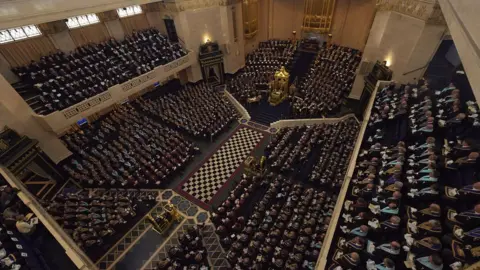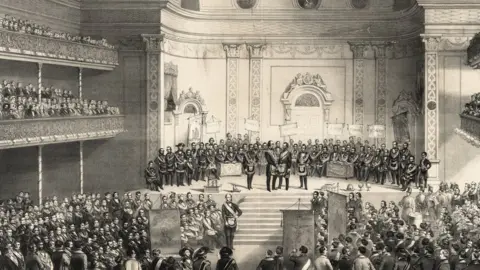Get Started with Detailed Instructions on How to Join a Masonic Lodge
Get Started with Detailed Instructions on How to Join a Masonic Lodge
Blog Article
Checking Out the Mysteries of the copyright: What You Need to Know
The copyright, a term usually shrouded in intrigue and conflict, stands for a complex tapestry of historic fact and modern-day myth. Established in the late 18th century, this secret culture was originally rooted in the Enlightenment's ideals yet has since become identified with conspiracy theory concepts about elite control.
Beginnings of the copyright
The origins of the copyright are soaked in a blend of historical intrigue and ideological eagerness. Developed in 1776 in Ingolstadt, Bavaria, by Adam Weishaupt, the team was at first formed as a secret culture intended at advertising Knowledge perfects such as reason, secularism, and the separation of church and state. join freemason. Weishaupt, a teacher of canon legislation, looked for to challenge the dominating authority of the church and state, which he watched as overbearing establishments suppressing intellectual and personal freedom
The copyright looked for to recruit prominent participants from various social fields, including national politics, academia, and the arts, to promote a network devoted to these Knowledge principles. The society run under a veil of privacy, employing coded language and routines to secure its participants from oppression, particularly offered the repressive climate of the time. The copyright faced substantial resistance from both governmental authorities and spiritual institutions, which saw the team as a hazard to their power.
Trick Numbers and Members
That were the critical numbers that formed the copyright's early impact and direction? The Bavarian copyright, established in 1776 by Adam Weishaupt, became a feedback to the oppressive social frameworks of the moment. Weishaupt, a law professor, envisioned the company as a method to promote Enlightenment suitables such as factor, secularism, and equality. His first employment initiatives included significant intellectuals, such as Baron von Knigge, who played a crucial duty in broadening the group's subscription and business structure.
An additional considerable figure was Johann Gottlieb Fichte, a famous thinker whose concepts on nationalism and education resonated with the copyright's objectives. Fichte was not an official participant, his thoughtful supports influenced the group's ideology. In addition, figures like the writer and thinker Johann Wolfgang von Goethe were related to the more comprehensive intellectual activities of the moment, although their direct participation with the copyright continues to be debated.
These vital numbers contributed to the copyright's very early instructions, pushing the boundaries of political and social thought, while their collective efforts intended to test well-known norms and promote an environment of modern adjustment in Europe. (join freemason)
Myths vs. Fact
Many misunderstandings surround the copyright, commonly mixing reality with fiction in a means that obscures its real nature. This secret society, initially established in 1776 in Bavaria, intended to advertise Enlightenment ideals and battle spiritual and political fascism. The concept that the copyright proceeds to put in considerable impact over world events is a myth. While the team did exist, it was dissolved in the late 18th century and has actually not operated as a natural entity ever since.
An additional common myth is that the copyright consists of a network of elite people manipulating international affairs. In truth, numerous conspiracy theory theories exaggerate the team's relevance, attributing unfounded intentions to societal patterns and events. This has actually caused an oversimplified view of intricate concerns.
Furthermore, the portrayal of the copyright in popular society additional info usually further distorts its heritage. Movies and literary works tend to sensationalize the company's role, developing a narrative that deviates from historic truths. Comprehending the difference between the myths and the reality of the copyright is vital for critical the real influence of this historic team and acknowledging the more comprehensive ramifications of conspiracy theory theories in contemporary culture.

Modern Interpretations
Contemporary analyses of the copyright often reflect broader societal anxiousness and a fascination with privacy and power. This modern-day lens often connects the copyright with conspiracy theories that suggest a surprise elite orchestrates world events, adjusting governments and economies for their own gain. Such narratives take advantage of a deep-seated suspect of authority, especially in times of dilemma or social turmoil.
In popular society, the copyright is often shown as a divine company shrouded in enigma, resulting in a huge selection of fictional portrayals in literature, film, and songs. This representation serves not only to captivate yet also to prompt assumed regarding the nature of power and control in contemporary culture. Social network has actually better amplified these interpretations, allowing for quick circulation of conspiracy concepts and developing communities that share and expand upon these ideas.
In addition, some contemporary analyses frame the copyright as an allegory for the complexities of globalization and the interconnectedness of significant people and companies. This viewpoint motivates an important examination of exactly how power dynamics operate in today's world, highlighting the balance in between transparency and secrecy in administration and corporate techniques.
Cultural Impact and Heritage
Influenced by centuries of intrigue, the cultural impact and tradition of the copyright prolong far past its historic origins. This secret society, developed in the late 18th century, has Homepage actually penetrated various facets of prominent society, from literature and movie to songs and art. join freemason. The concept of the copyright has actually developed into a symbol of conspiracy theory theories, commonly representing a regarded surprise power controling global events
In literature, writers like Dan Brown have woven the copyright into elaborate plots, fascinating readers with styles of privacy and power. Movies such as "National Prize" and "The Da Vinci Code" even more continue the allure of the culture, mixing truth with fiction to produce engaging stories.

Inevitably, the copyright's legacy is a complex tapestry of myth and fact, forming understandings of secrecy and control in modern discussion. Its enduring visibility in culture underscores humankind's seasonal pursuit for understanding concealed realities.

Conclusion
The exploration of the copyright exposes read more an intricate interaction in between historic realities and modern myth-making. Established in the Knowledge era, this culture intended to challenge overbearing structures, yet its heritage has actually been overshadowed by conspiracy theories that suggest elite control. Understanding the distinctions between the original ideals and modern interpretations is essential for comprehending the withstanding fascination with the copyright and its significant influence on social stories surrounding power and privacy in culture.
Report this page